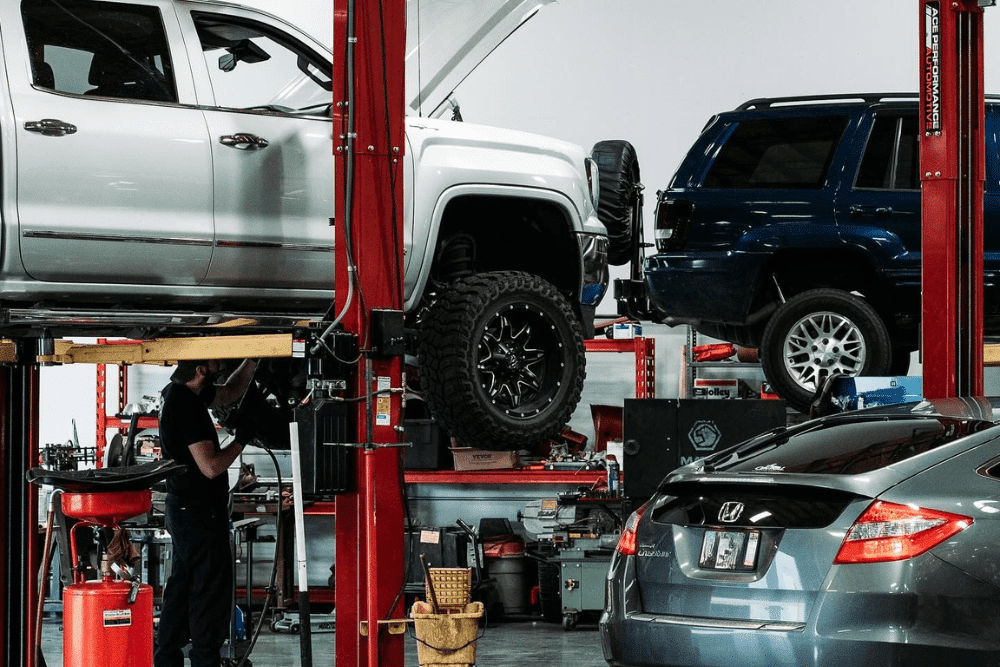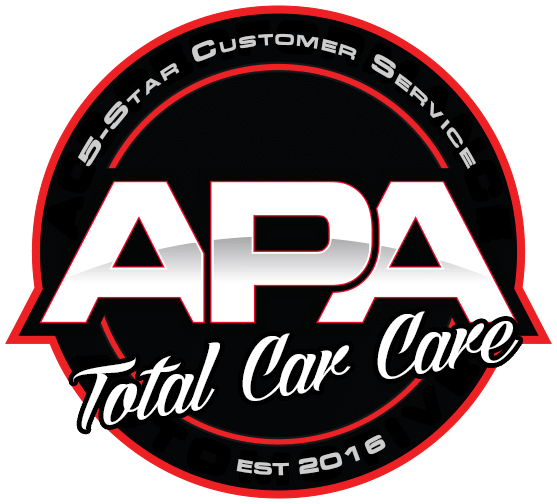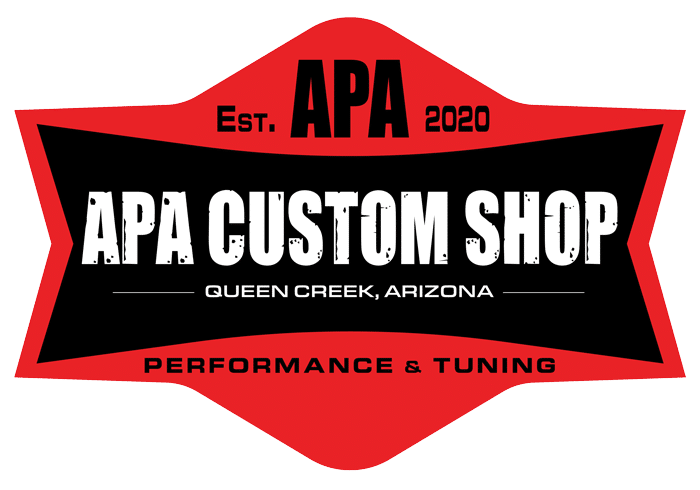Complete Fall Car Care for Arizona Drivers: Essential Maintenance Tips for the Season
Fall car maintenance in Arizona focuses on repairing heat damage rather than winter preparation. Essential tasks include checking fluids degraded by extreme temperatures, testing batteries weakened by heat stress, inspecting tires for asphalt damage, and examining belts and hoses for cracking. At APA Total Car Care in Queen Creek, AZ, we specialize in seasonal inspections that address Arizona’s unique climate challenges, helping you avoid expensive repairs caused by summer’s invisible damage.
Arizona’s fall is about damage control. While your vehicle survived another brutal summer, months of 115-degree heat have taken their toll in ways that won’t reveal themselves until temperatures start fluctuating. This guide covers the critical systems most affected by extreme heat: fluids, batteries, tires, and rubber components. We’ll show you what to check, why it matters, and how proper autumn maintenance saves you from roadside emergencies.

Why Arizona's Summer Creates Unique Fall Maintenance Needs
Arizona’s brutal summer temperatures regularly exceed 115 degrees, creating conditions that accelerate vehicle wear in ways most drivers don’t realize. While northern states prepare for ice and snow, Arizona drivers face a different challenge: repairing the invisible damage caused by months of extreme heat exposure.
Heat affects your vehicle in several critical ways:
- Engine oil breaks down 40% faster in extreme temperatures
- Battery life decreases by up to 50% compared to moderate climates
- Rubber components (belts, hoses, seals) become brittle and crack
- Tire rubber degrades more rapidly from hot asphalt contact
- Transmission fluid loses its protective properties faster
The financial impact is clear: a $150 coolant system service in fall prevents a $2,500 engine repair caused by overheating. A $200 battery replacement avoids a towing bill and potential electrical system damage.
Essential Fluid Services for Fall
Engine Oil and Filter
Your engine oil works overtime during Arizona summers, becoming contaminated with carbon deposits and moisture even before your mileage interval. Fresh oil provides better lubrication as temperatures fluctuate, helping prevent wear during cold starts and maintaining optimal performance.
Coolant System Health
Summer heat causes coolant to break down, losing its ability to prevent corrosion and regulate temperature effectively.
Critical coolant system checks include:
- Testing coolant pH levels and freeze point protection
- Inspecting the radiator for corrosion or damage
- Checking water pump for leaks or bearing noise
- Examining hoses for soft spots, bulges, or cracks
- Flushing and replacing degraded coolant
Transmission and Brake Fluids
Automatic transmissions generate tremendous heat, and Arizona’s temperatures push them to their limits. Dark brown fluid or a burnt smell indicates immediate attention is needed.
Brake fluid absorbs moisture from the air, and in Arizona’s climate, this accelerates rapidly. When the brake fluid’s boiling point decreases, you risk losing braking power when you need it most.
Tire Care Beyond the Basics
Your tires have spent months in contact with asphalt that reaches 160 degrees or higher. This extreme heat creates wear patterns and damage that become critical safety concerns as temperatures drop.
Comprehensive tire inspection points:
- Tread depth measurement: Look for 4/32″ minimum, though 6/32″ is safer
- Sidewall integrity: Check for heat-induced cracks, bulges, or blisters
- Uneven wear patterns: Indicate alignment, balance, or suspension issues
- Age verification: Tires older than six years need replacement
- Valve stem condition: Rubber stems become brittle and leak
For every 10-degree temperature drop, your tire pressure decreases by 1-2 PSI. As Arizona transitions from 110-degree days to 70-degree mornings, this results in significant underinflation that reduces fuel economy and compromises handling.
Battery and Electrical System Reality Check
Heat kills batteries faster than cold. The chemical reaction inside your battery accelerates in high temperatures, causing internal components to corrode and degrade at an alarming rate.
Battery failure warning signs:
- The engine cranks slowly, especially on the first start
- Clicking sound when turning the key
- Dimming headlights when idling
- Battery case appears swollen or bloated
- Corrosion around terminals
A professional battery test measures voltage, cold cranking amps, and the battery’s ability to hold a charge under load. Testing should also include alternator output and starter draw analysis to ensure your entire charging system functions properly.
Brake System Performance Assessment
Your brakes work harder in Arizona’s heat, with brake fluid reaching boiling temperatures during normal driving and pads wearing faster due to increased friction.
Complete brake inspection includes:
- Pad thickness measurement: Replace at 3mm or less
- Rotor condition: Look for scoring, hot spots, or warping
- Caliper slide pin lubrication
- Brake line inspection for corrosion or leaks
- Brake fluid quality testing
Suspension, Steering, and Rubber Components
Arizona’s rough roads and extreme heat create the perfect storm for component failure.
Critical components to inspect:
- Ball joints and tie rod ends for play or looseness
- Control arm bushings for cracking or deterioration
- Shock absorbers and struts for leaks or loss of damping
- Serpentine belt for glazing, cracking, or fraying
- Radiator and heater hoses for soft spots or bulges
A failed belt means immediate loss of power steering, alternator charging, water pump circulation, and A/C operation. A burst hose means engine overheating and potential severe damage.
Why Fall Is a Smart Time for A/C Service
In Arizona, cooler weather doesn’t always mean you’re done using your A/C. Even in the fall, a properly working air conditioning system is essential for comfort, especially during warmer afternoons or long drives.
If your A/C wasn’t keeping up this past summer with weak airflow, strange smells, or inconsistent cooling, now’s the time to get it checked out. Fall offers a natural window to catch up on needed maintenance.
Lighting and Visibility Essentials
Shorter fall days mean more driving in darkness. Check headlight brightness and lens clarity, ensure proper aim adjustment, and verify that all turn signals and brake lights function properly.
Arizona’s UV exposure destroys wiper rubber faster than anywhere else. Blades that streak, skip, or chatter need immediate replacement before monsoon season returns.
Need service for your fall car maintenance? Give us a call at 480-539-6872. Our shop is located at 22325 S. Scotland Court, Suite 101, Queen Creek, AZ 85142.
Why Choose APA Total Car Care for Your Fall Maintenance
At APA Total Car Care in Queen Creek, we’ve been helping Arizona drivers protect their vehicles since 2021. Our approach focuses on honest, transparent service that treats every vehicle as if it were our own.
What sets us apart:
- ASE Master Technicians with decades of combined experience
- Advanced diagnostic equipment, including Autel MaxiSys Ultra scanners
- Hunter Road Force balancer and Hawkeye alignment machine
- Digital vehicle inspections with photo documentation
- Nationwide 3-year/36,000-mile warranty valid throughout the US, Canada, and Mexico
- Five consecutive years as a CarFax Top Shop
- Flexible financing through Easy Pay, SNAP Finance, Affirm, and Wisetack
Our facility provides a comfortable experience with WiFi, coffee bar, cold water, early bird drop-off, and after-hours pickup options.
FAQs About Fall Car Maintenance in Arizona
What maintenance should I do on my car in the fall?
Essential fall maintenance includes checking all fluids, inspecting tires, testing your battery, and examining belts and hoses for heat damage. These services address wear caused by summer heat and prepare your vehicle for temperature changes throughout fall and winter.
How do I prepare my vehicle for cooler Arizona weather?
Prepare by having your cooling system serviced, checking battery health, inspecting tire pressure, and ensuring all fluids are at proper levels. Temperature fluctuations between day and night can reveal issues that developed during summer’s consistent heat.
What fluids should be checked before winter?
Check engine oil, coolant, brake fluid, transmission fluid, power steering fluid, and windshield washer fluid before winter. Summer heat causes fluid degradation that requires replacement, and fresh fluids ensure optimal protection during seasonal temperature variations.
How often should I rotate my tires in Arizona?
Tire rotation should typically occur every 5,000 to 7,500 miles, though Arizona’s hot roads may warrant more frequent rotation. Regular rotation ensures even wear, extends tire life, and maintains balanced handling for improved safety and performance.
Can extreme Arizona heat damage my car battery?
Yes, extreme heat accelerates the chemical reactions inside batteries, leading to internal component corrosion and accelerated deterioration. Arizona’s summer temperatures can reduce battery life by 50% compared to moderate climates, making fall testing essential for batteries over three years old.
Schedule Your Fall Car Maintenance in Queen Creek, AZ
Ready to ensure your vehicle is prepared for the months ahead? Schedule your autumn car service in Queen Creek with APA Total Car Care, the Best Family Owned Auto Repair in the East Valley. Our honest, transparent approach means you’ll receive only the services your vehicle truly needs.
Visit us at 22325 S. Scotland Court, Suite 101, Queen Creek, AZ 85142, or call 480-539-6872 to book your comprehensive seasonal vehicle inspection. Let our experienced team help you avoid expensive repairs through proper preventative maintenance.

